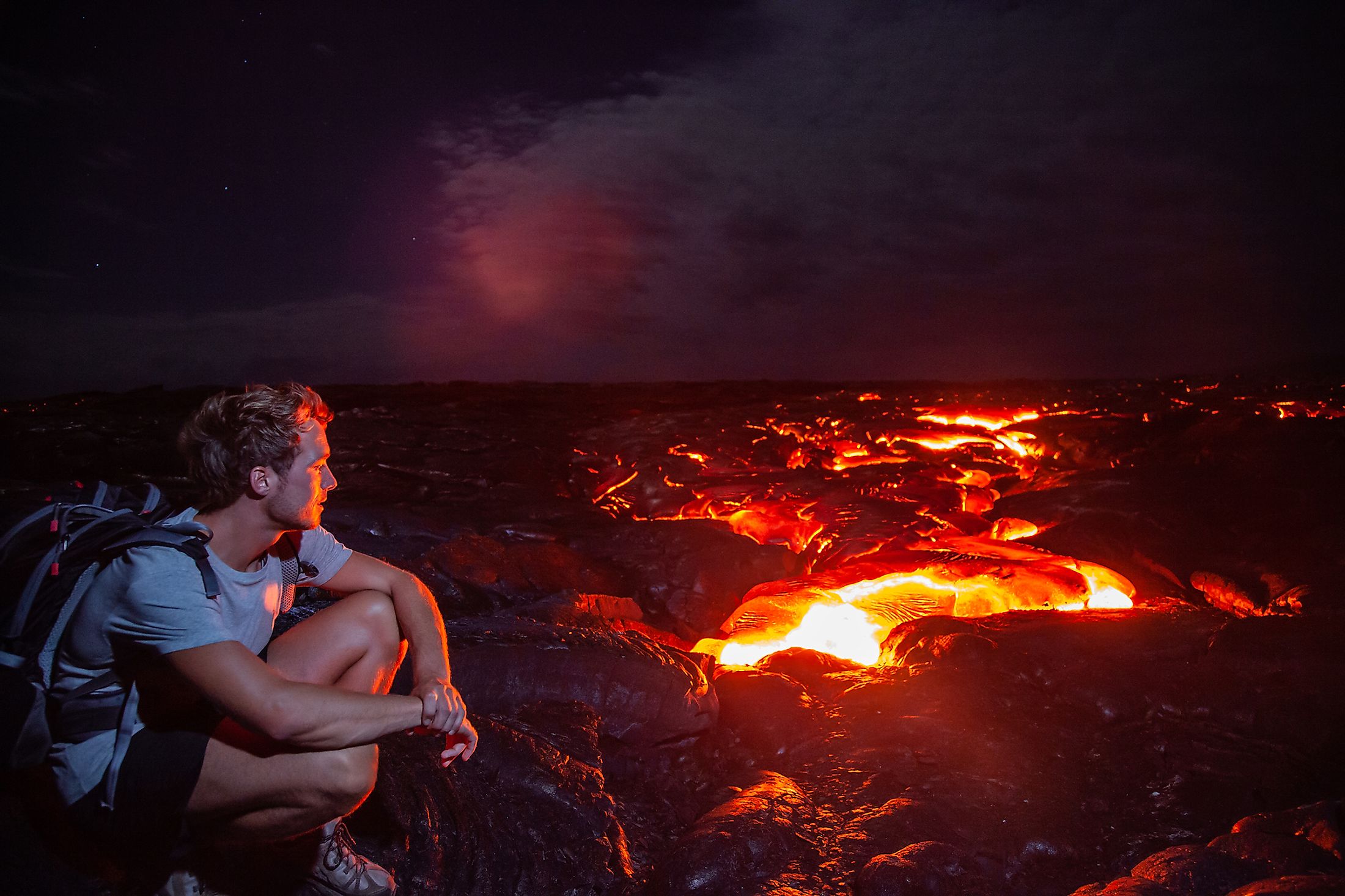
Kilauea
Kilauea is one of the most active volcanoes on the Island of Hawaii. The shield volcano is located in the southeastern part of Mauna Loa and is the main attraction of the Hawaii Volcano National Park. Kilauea is one of the five most active volcanoes in the Hawaiian Island that form the Big Island of Hawai’i. The volcano rises 1,247 meters above sea level and is estimated to be 210,000-280,000 years old. It is among the world’s most active volcanoes and may even rank as the most active volcano. The volcano has erupted several times, with the most recent eruption beginning on September 29, 2021, and still ongoing.
Important Facts
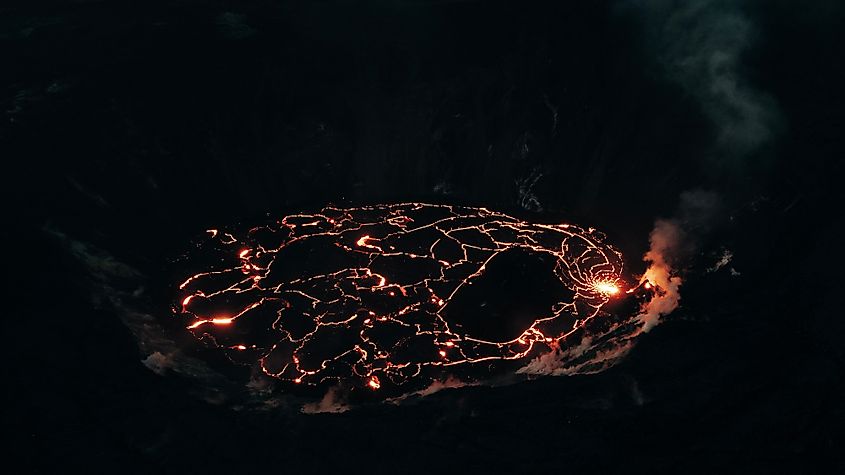
Kilauea is the Hawaiian Islands’ southernmost volcano and was, for years, considered part of the neighboring Mauna Loa because it lacked topographical prominence. Also, its eruption activities were similar to those of its neighbor. However, it is a separate volcano and the Hawai’i hotspot’s second-youngest product. The word “Kilauea” was initially used by the Hawaiians to refer to the summit caldera. However, the name now refers to the entire volcano.
Kilauea is an elongated shield-like volcano with a large summit caldera and has two rift zones. The rift zone on the east is the longest, extending for about 125 kilometers. The west rift zone is only 35 kilometers long. The summit caldera is nearly 5 kilometers long, 3.2 kilometers wide, and has an area of about 10 square kilometers. Kilauea has a topographic prominence of 15 meters and its north and west slopes merge with those of Mauna Loa volcano.
Geology Of Kilauea
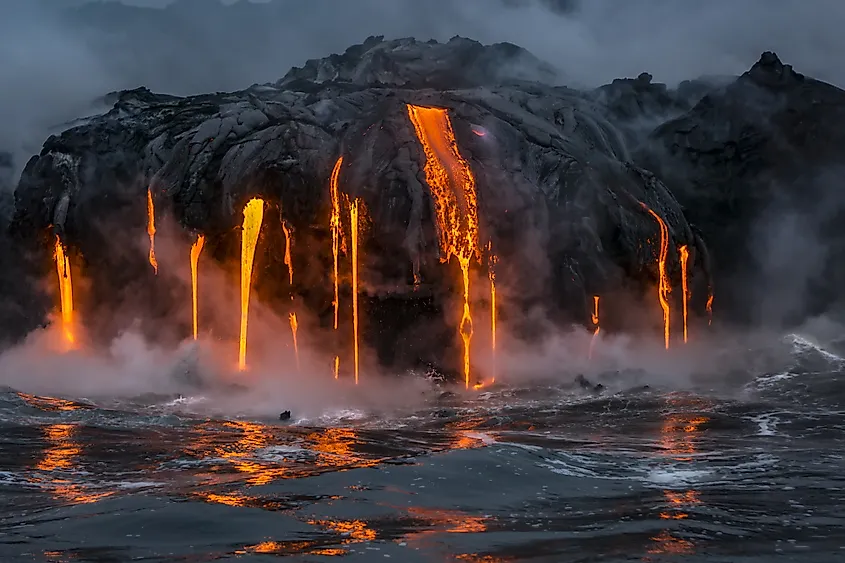
Kilauea, just like the other Hawaiian volcanoes, was formed when the Pacific Plate moved over the Hawai’i hotspot, a process that also formed the 6,000-km-long Hawaiian-Emperor seamount chain. The volcano is currently the undersea mountain range’s eruptive center and the second-youngest volcano (only older than Loihi Seamount). Kilauea is one of the five most active volcanoes constituting Hawai’i Island.
Initially, Kilauea was a submarine volcano and progressively erupted and emerged from the sea approximately 50,000-100,000 years ago. However, the volcano is 300,000-600,000 years old and has erupted frequently in the last 300 years. Although the volcano rises 1,247 meters above sea level, the eruption activities will likely make it taller. The southern flank has an active fault known as the Hilina fault system that slips vertically at about 2-20 millimeters per year.
Eruptive History Of Kilauea
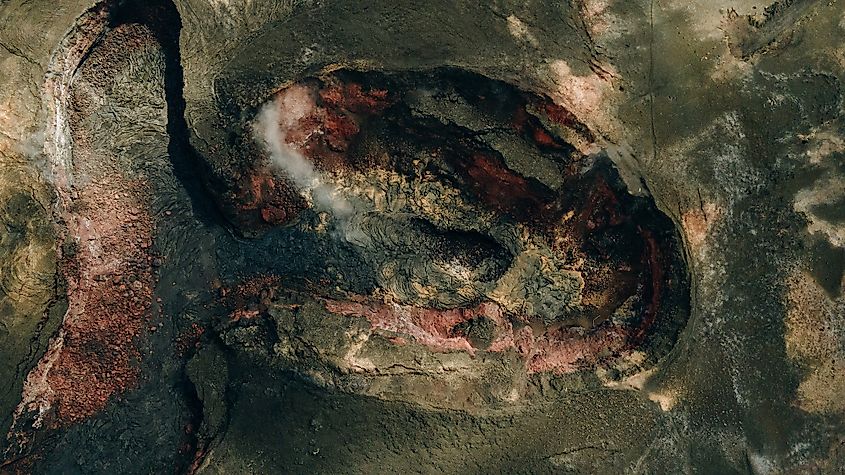
Kilauea has erupted severally over the last 200-300 years, with the oldest recovered lava flow dating back at least 275,000 years. The recovered lava exhibits eruptive episodes characteristic of a seamount that was still submerged in the ocean. The rock samples, drilled from Kilauea, suggest that the volcano may have emerged from the sea about 50,000 years ago.
Kilauea’s first recorded eruption dates back to the 19th century, with the first well-recorded eruption occurring in 1823. However, oral records obtained from the Native Hawaiians suggest the volcano may have erupted in 1790, killing part of the Keoua Kuahu’ula warriors. The volcano has erupted 61 times since 1823, making it one of the world’s most active volcanoes. However, the lava volume and the eruptions’ origin and length have varied with each activity. Some eruptions lasted a few days, while others lasted for years, with lava flowing from different sites. But, more than half of the eruptions have occurred near or at the summit caldera.
Kilauea’s longest eruption began on January 3, 1983, and lasted until September 2018, making it the Earth’s 12th longest volcanic eruption since 1750. Although the volcano began erupting on a vent on the east rift zone, the activity shifted several times during the eruption period. By December 31, 2016, the rift zone on the east had produced up to 4.4 cubic kilometers of lava that covered 144 square kilometers. The 2018 eruptions caused earthquakes and destroyed over 87 houses in Leilani Estate and the surrounding areas. The recent eruption began on September 29, 2021.
Kilauea In Hawaiian Mythology
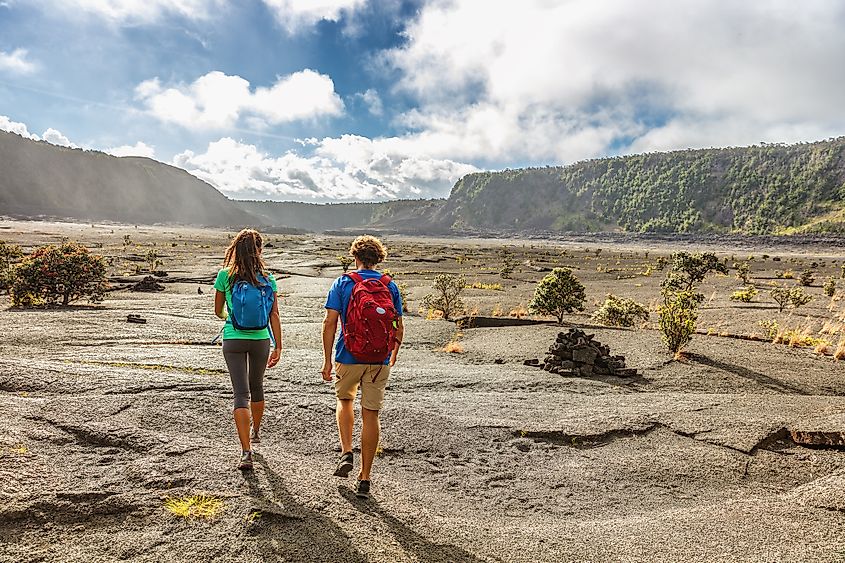
Kilauea and the other four Hawaiian volcanoes are considered sacred mountains by the Native Hawaiians. In Hawaiian mythology, the deity Pele (goddess of volcanoes, live in Kilauea. It is also on this volcano that Pele and Kamapua’a (rain god) fought each other. The Halemaumau vent on the summit caldera derives its name from conflict between the two goddesses. Kamapua’a, realizing that the lava spout produced by Pele could harm him, covered the vent with amaumau fern, hence the name “Halemaumau.” Eventually, other gods separated the two deities since their conflict was becoming a threat to the others.











